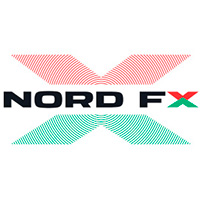After several false starts over the past few weeks and months, it appears as though the coronavirus crisis is finally coming to an end. Barring the odd rogue strain here and there, the response to widespread vaccination has been overwhelmingly positive; even the most beaten-down sectors are beginning to come back to life. Energy was one commodity hit extremely hard by the pandemic as demand for oil dropped off a cliff with the ensuing global shutdown. At its lowest ebb back in April, Brent actually fell to an 18-year low of less than $20 a barrel!
Naturally, this black swan event's impact was always going to be temporary and, once lockdowns were relaxed and OPEC production cut agreements finalised, we saw a rather quick recovery to $40. But, from then on, oil traded sideways for the best part of the rest of the year.
Only after vaccines were approved did the tide really start to turn. With an overwhelming majority of the world's population still unvaccinated, the potential upside is still significant. In fact, Brent is only trading at around $60 a barrel, which is a good 40% from its local high of $86.04.
Demand forecasts looking up
Following an early hiccup due to underestimating the challenge of global vaccination, demand for oil is now growing steadily. The IEA has estimated a rise in demand to 96.64 million bpd this year, representing a 5.5 million bpd recovery YOY. Meanwhile, OPEC was even more optimistic in its own projections, revising its initial 95.89 million bpd estimate to 95.91 million, a 5.9 million bpd improvement from 2020 levels. As long as the cartel can stick to its production cut agreement, there's every reason that this should translate into higher prices for the energy resource — not least following Saudi Arabia's surprise decision to reduce its Feb-March crude production by a further 1 million bpd. Last month, Goldman Sachs predicted Brent at $65 by mid-2021, but it may amend its estimate upwards amid recent developments.
The API's take
The American Petroleum Institute (API) reported a 4.261-million-barrel draw in crude oil inventories in its report of 2 February 2021. While this was actually lower than the previous week's figure of -5.272M, it signifies the return to a positive pattern of consistent draws on reserves. This comes after a shock +2.562M surplus raised concerns in the third week of January. As long as this trend continues, the oil bulls will remain relatively upbeat about future prices. As such, US inventory figures will remain a closely watched metric over the coming weeks as many look with cautious optimism for confirmation of a recovery in oil demand.
Trade crude CFDs on Libertex
Even with all the fancy models, projections and analyses in the world, nobody truly knows where the market is headed. It would certainly seem that oil has finally put the worst behind it, but even the most spectacular of rallies can see short-term corrections to the downside. But if you think you have a good idea where prices are going, why not put your theory to the test?
Since Libertex offers both long and short CFDs in Brent, WTI and Light Sweet, you're guaranteed to find a crude oil instrument and trade direction to suit your personal preferences. Try our award-winning and intuitive platform today, and you'll never look back.
Libertex is one of the most well-trusted names in the CFD trading industry and has been connecting ordinary people with the financial markets for over two decades. Create a Libertex account now if you haven't already and start trading oil CFDs with one of the best brokers around!
 The firm grants access to over 450 trading instruments across six major asset classes, including forex, commodities, metals, indices, shares, and futures, catering to diverse trading preferences.
The firm grants access to over 450 trading instruments across six major asset classes, including forex, commodities, metals, indices, shares, and futures, catering to diverse trading preferences. Trump has declared that the United States could become the global capital of the crypto industry. To achieve this, he proposes reducing regulatory pressures.
Trump has declared that the United States could become the global capital of the crypto industry. To achieve this, he proposes reducing regulatory pressures. Forex trading is a captivating endeavor, promising both active and passive income streams. Yet, mastering forex is a continuous journey that transcends expertise levels, be it a novice or a seasoned trader...
Forex trading is a captivating endeavor, promising both active and passive income streams. Yet, mastering forex is a continuous journey that transcends expertise levels, be it a novice or a seasoned trader... In a resounding victory, NordFX, a prominent brokerage firm, has been crowned the "Best News & Analysis Provider" of 2023...
In a resounding victory, NordFX, a prominent brokerage firm, has been crowned the "Best News & Analysis Provider" of 2023... Errante, the premier online broker, is dedicated to delivering top-tier services and forging long-lasting, trust-based relationships with our clients. Our mission is to enhance your online trading journey...
Errante, the premier online broker, is dedicated to delivering top-tier services and forging long-lasting, trust-based relationships with our clients. Our mission is to enhance your online trading journey...